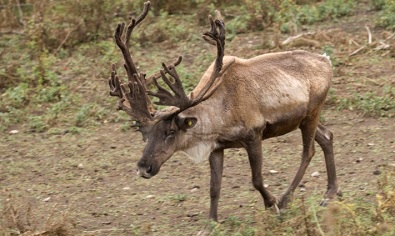The management board of two herds of caribou that can, at times, be found in northern Saskatchewan have launched a ten year plan.
It is 43rd year of operation the Beverly and Qamanirjuaq Caribou Management Board (BQCMB), which serves as an advisory board to help care for and preserve the two caribou herds they monitor.
The board launched a ten year plan for management of the herds.
According to the BQCMB, the plan follows two guiding principles – shared responsibility and prioritizing caribou in the caribou-people relationship.
The caribou management board has broken down the plan into four main priority areas. These are watching the caribou, respecting the caribou, respecting the land, and community connections.
BQCMB Chair Earl Evans says new partners have signed on to help protect the herds, which he says will help the board better fulfill its mandate.
“A lot of these governments have have Caribou plans and guardianship plans in place already, so we’re integrating their knowledge into our plan that we have for the protection of Caribou, so this strengthens up our position considerably,” Evans said in a conversation with MBC Radio news.
The management board has pushed the “Shared Responsibility” portion of the ten-year plan.
“we all use these herds and we all have a responsibility to manage and try to help these herds recover
to the best of our ability,” said Evans. “This responsibility is brought forth by the new signatories.
They can bring it back to their people, their communities, and spread the word from the inside out kind of thing as users themselves.”
Evans says the Beverly and Qamanirjuaq caribou herds have been in a steady decline of numbers since 1994. However, he says they saw a stabilization in numbers this past year because of a healthy calf population.
He believes that stabilization is sustainable.
“I think it looks good. And like I said, with the people now and so involved in every community, there’s such an awareness in every community as to how people are taking lessand making sure they’re maximizing their harvest to the most,” he said. “And that word has really spread in the last four or five years. And I think it’s having a positive effect on what we can see.”
More information on the ten-year plan at the board itself can be found here.
